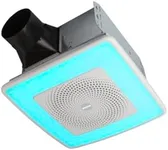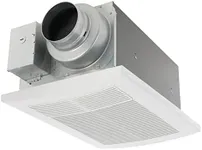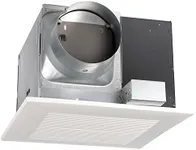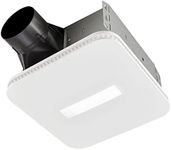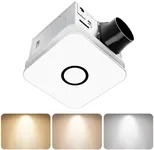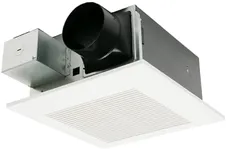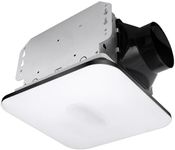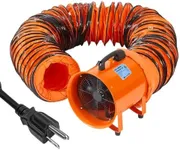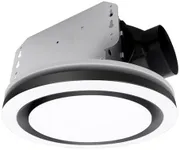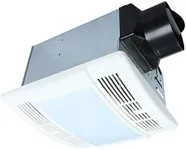Buying Guide for the Best Quiet Bathroom Fans
Choosing the right bathroom fan is essential for maintaining good air quality and preventing moisture buildup, which can lead to mold and mildew. A quiet bathroom fan ensures that you can enjoy a peaceful environment while still effectively ventilating your space. When selecting a bathroom fan, it's important to consider several key specifications to ensure you get the best fit for your needs.Noise Level (Sones)The noise level of a bathroom fan is measured in sones. This spec is crucial because it determines how loud the fan will be when it's running. A lower sone rating means a quieter fan. Fans with a rating of 1.5 sones or less are considered very quiet, making them ideal for those who want minimal noise. Fans rated between 1.5 and 3 sones are moderately quiet and suitable for most users. If noise is not a major concern, fans with ratings above 3 sones can be considered. To pick the right one, think about how sensitive you are to noise and how much peace and quiet you desire in your bathroom.
Airflow Capacity (CFM)Airflow capacity is measured in cubic feet per minute (CFM) and indicates how much air the fan can move. This spec is important because it determines the fan's ability to ventilate the bathroom effectively. For small bathrooms (under 50 square feet), a fan with 50 CFM is usually sufficient. For medium-sized bathrooms (50-100 square feet), look for fans with 70-90 CFM. Larger bathrooms (over 100 square feet) may require fans with 100 CFM or more. To choose the right airflow capacity, measure your bathroom's size and select a fan that matches or exceeds the recommended CFM for that space.
Energy EfficiencyEnergy efficiency refers to how much electricity the fan uses to operate. This spec is important because it affects your energy bills and environmental impact. Look for fans with the ENERGY STAR label, as they are designed to use less energy without sacrificing performance. Energy-efficient fans typically have advanced motors and better overall design. To pick the right one, consider how often you will use the fan and your preference for reducing energy consumption.
Installation TypeThe installation type of a bathroom fan can vary, including ceiling-mounted, wall-mounted, or inline fans. This spec is important because it determines how and where the fan can be installed in your bathroom. Ceiling-mounted fans are the most common and are suitable for most bathrooms. Wall-mounted fans are ideal for bathrooms without ceiling access. Inline fans are installed in the ductwork and are great for larger bathrooms or when you want to minimize noise. To choose the right installation type, consider your bathroom's layout and existing ventilation setup.
Additional FeaturesAdditional features can include built-in lights, humidity sensors, and heaters. These specs are important because they can enhance the functionality and convenience of your bathroom fan. Built-in lights can provide extra illumination, while humidity sensors automatically turn the fan on and off based on moisture levels, ensuring optimal air quality. Heaters can add warmth to the bathroom, making it more comfortable. To pick the right features, think about what additional benefits you would like from your fan and how they align with your needs.
